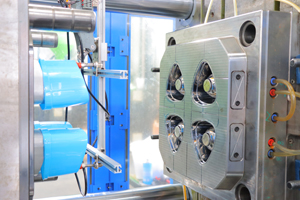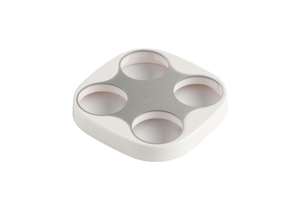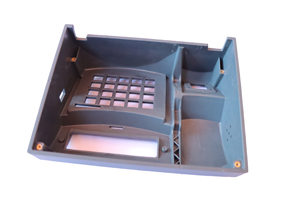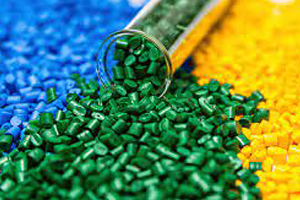Shrinkage of Injection Molding Process
Plastic varieties in the process of heating injection molding, owing to the change in volume caused by crystallization, strong internal stress, plastic parts frozen residual stress, strong molecular orientation, shrinkage rate is higher than thermosetting plastic. Large, wide shrinkage range, obvious directionality, and after molding. When the plastic part is formed, the molten material contacts the surface of the cavity and the outer layer immediately cools to form a low-density solid shell. Due to the poor thermal conductivity of plastic, the inner layer of the plastic part is slowly cooled to form a high-density solid layer with large shrinkage. Therefore, the wall thickness, slow cooling, and high density layer thickness will shrink greatly. In addition, the presence or absence of inserts and the layout and quantity of inserts directly affect the direction of material flow, density distribution and shrinkage resistance, so the characteristics of plastic parts have a greater impact on shrinkage size and directionality.
The form, size and distribution of the feed port directly affect the material flow direction, density distribution, pressure-retaining and feeding effect and molding time. The direct feeding port and the feeding port with large cross-section (especially thicker cross-section) have small shrinkage but large directionality, and the wide and short feeding port has small directionality. Close to the feed port or parallel to the direction of the material flow, the shrinkage is large.
The Fluidity of Plastic Injection Molding Process
The fluidity of thermoplastics can generally be analyzed from a series of indices such as molecular weight, melt index, Archimedes spiral flow length, apparent viscosity and flow ratio (process length/plastic wall thickness). Small molecular weight, wide molecular weight distribution, poor molecular structure regularity, high melt index, long spiral flow length, low apparent viscosity, and large flow ratio are good for fluidity. For the plastic of the same product name, the manual must be checked to determine whether its fluidity is suitable for injection molding.
The Crystallinity of Plastic Injection Molding Process
Thermoplastics can be divided into two categories: crystalline plastics and amorphous plastics, according to their absence of crystallization during condensation. The so-called crystallization phenomenon is that when the plastic changes from the molten state to the condensation, the molecules move independently, completely in a disordered state, and the molecules stop moving freely. Then in a slightly fixed position, and there is a phenomenon that makes the molecular arrangement tend to be a regular model.
As the standard for judging the appearance of these two common injection molded plastics, it depends on the transparency of the thick-walled plastic parts of the plastic. Generally, crystalline materials are opaque or translucent, and amorphous materials are transparent. But there are exceptions, such as polymethylpentene is a crystalline plastic but has high transparency, ABS is an amorphous material but not transparent.
Heat-sensitive Plastics and Easily Hydrolyzed Plastics of Plastic Injection Molding Process
Heat sensitivity means that some plastics are more sensitive to heat, and the heating time is long at high temperature or the cross-section of the feed port is too small, and when the shearing action is large, the material temperature is increased, and it is prone to discoloration, degradation, and decomposition. Plastics are called heat-sensitive plastics. Such as rigid PVC, polyvinylidene chloride, vinyl acetate copolymer, POM, polychlorotrifluoroethylene, etc. When the heat-sensitive plastic is decomposed in the plastic injection molding inserts process, by-products such as monomers, gases, and solids are produced. Especially, some decomposed gases are irritating, corrosive or toxic to the human body, equipment, and molds. Therefore, attention should be paid to plastic mold design, selection of injection molding machines and molding. Screw injection molding machines should be selected. The cross-section of the gating system should be large. The mold and barrel should be chrome-plated, and there should be no corners. Add stabilizer to weaken its heat-sensitive properties.
Stress Cracking and Melt Fracture of Plastic Injection Molding Process
Some plastics are sensitive to stress, and are prone to internal stress during molding and are brittle and easy to crack. The plastic parts will crack under the action of external force or under the action of solvents. To this end, in addition to adding additives to the injection molding materials to improve crack resistance, attention should be paid to drying the raw materials, and the molding conditions should be selected reasonably to reduce internal stress and increase crack resistance. A reasonable shape of plastic parts should be selected, and measures such as inserts should not be set to minimize stress concentration. When at the stage of injection mold design engineering, the drafting slope should be increased, and a reasonable feeding port and ejecting mechanism should be selected. When molding, the material temperature, mold temperature, injection pressure and cooling time should be properly adjusted, and try to avoid demolding when the plastic parts are too cold and brittle. After molding, the plastic parts should also be post-treated to improve crack resistance, eliminate internal stress and prohibit contact with solvents.
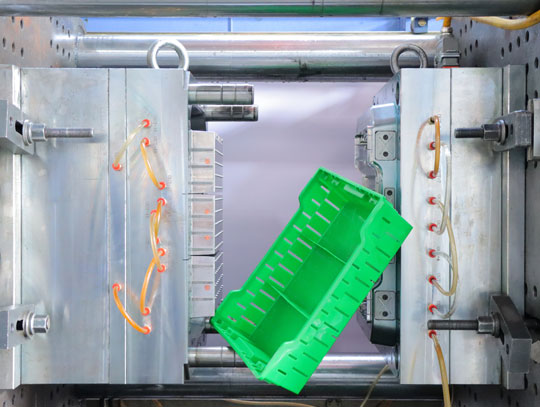
Hygroscopicity of Plastic Injection Molding Process
There are various additives in plastic molding supplies, which make them have different degrees of affinity for water. Therefore, plastics can be roughly divided into two types: hygroscopic, adhering to water, and non-absorbent and not easy to adhere to water. The water content in the material must be controlled within the allowable range. Otherwise, under high temperature and high pressure, water will become gas or hydrolysis will occur, which will cause resin foaming, decreased fluidity, poor appearance and mechanical properties. Therefore, hygroscopic plastics must be preheated by appropriate plastic injection molding process heating methods and specifications as required to prevent moisture absorption during use.

